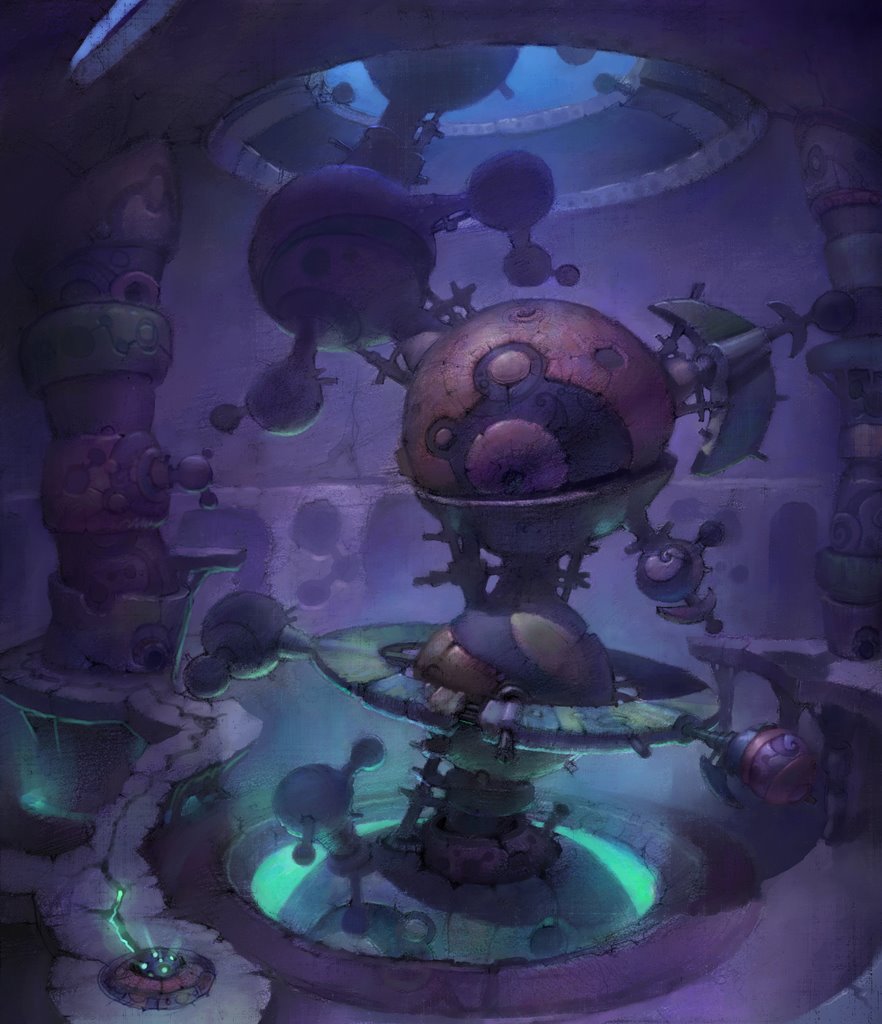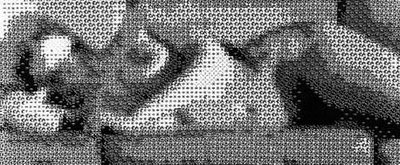
A nifty computer image from the blog of Disney concept artist Todd Harris
In my last post, I mentioned that art originated in the paleolithic era after our ancestors discovered a type of rock that could be shaped into the first blades, flints and other tools that transformed human life. That special rock (cryptocrystalline siliceous) contained silica-- the same material that, 35,000 years later, we use to make semiconductors for computers. This fateful substance has now intervened twice in our history to alter human destiny.
For that reason alone, it seems to me that computer art-- produced with silicon chips-- has earned a little patience and an open mind.
Computer art has now been with us for over 50 years (if you include the pre-ASCII images created with early Baudot code) For most of that time, computer art has been simply awful.

Jennifer Bartlett wowed the art establishment by using computers to convey platitudes on LEDs

A computer modified image of a nude

Computer generated Op Art
The fundamental problem with the computer as an artistic tool is that computers are exclusively a technology for binary information, but binary information is not often a major ingredient of great art. Most art doesn't need more information-- it needs more wisdom, judgment and taste. One of my favorite thinkers on this subject is the ever insightful Karrie Jacobs, who wote:
Computers have seduced us into thinking about ideas-- the intangible stuff that comprises our culture, our mental universe, our homegrown organic realities-- as information....With information technology, our reach is infinite but our grasp is weak.Jacobs asserts that information should be our raw material, not our end product, and I agree with her. To the extent that computer art is finally getting interesting, it is where computers serve as a means to an end, and not the end itself. As with any new art tool, it takes time for artists to humanize and gain proficiency with computers (and to modify them to carry out the subtler instructions of the artist). But after fifty years, computers have become integrated into the conception, production and distribution phases of art. Some of this art is quite good. Some-- in my view-- is pretty bad.
Over the next few posts, I hope to engage in a dialogue with readers who know more than I do about computer art. Most of all, I am interested in how computers are changing the nature of the artistic process. Let's explore.